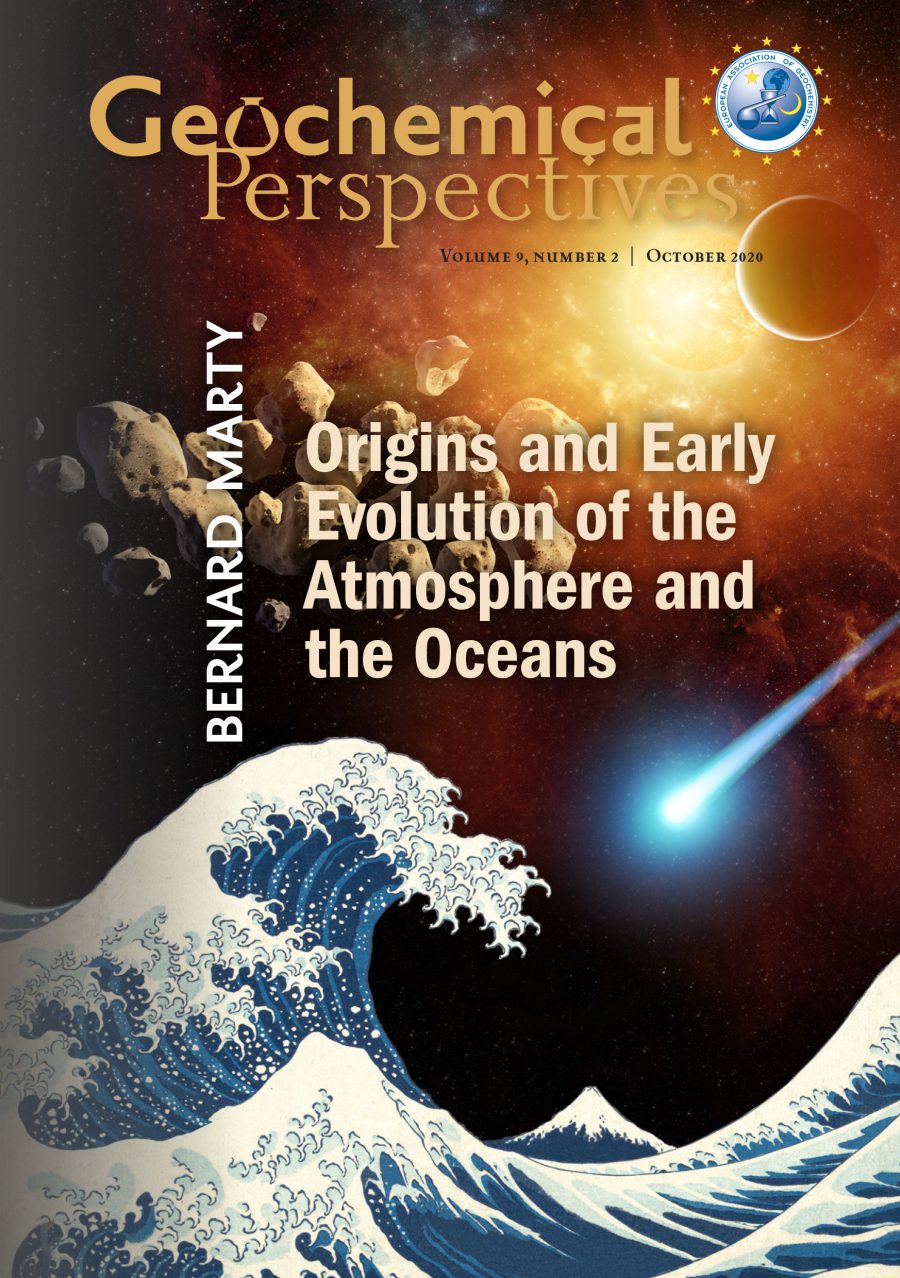
Origins and Early Evolution of the Atmosphere and the Oceans
by Bernard Marty1doi: 10.7185/geochempersp.9.2 | Volume 9, Number 2 (pages 135-313)
Abstract
My journey in science began with the study of volcanic gases, sparking an interest in the origin, and ultimate fate, of the volatile elements in the interior of our planet. How did these elements, so crucial to life and our surface environment, come to be sequestered within the deepest regions of the Earth, and what can they tell us about the processes occurring there? My approach has been to establish geochemical links between the noble gases, physical tracers par excellence, with major volatile elements of environmental importance, such as water, carbon and nitrogen, in mantle-derived rocks and gases. From these analyses we have learned that the Earth is relatively depleted in volatile elements when compared to its potential cosmochemical ancestors (e.g., ~2 ppm nitrogen compared to several hundreds of ppm in primitive meteorites) and that natural fluxes of carbon are two orders of magnitude lower than those emitted by current anthropogenic activity. Further insights into the origin of terrestrial volatiles have come from space missions that documented the composition of the proto-solar nebula and the outer solar system.
The consensus behind the origin of the atmosphere and the oceans is evolving constantly, although recently a general picture has started to emerge. At the dawn of the solar system, the volatile-forming elements (H, C, N, noble gases) that form the majority of our atmosphere and oceans were trapped in solid dusty phases (mostly in ice beyond the snowline and organics everywhere). These phases condensed from the proto-solar nebula gas, and/or were inherited from the interstellar medium. These accreted together within the next few million years to form the first planetesimals, some of which underwent differentiation very early on. The isotopic signatures of volatiles were also fixed very early and may even have preceded the first episodes of condensation and accretion. Throughout the accretion of the Earth, volatile elements were delivered by material from both the inner (dry, volatile-poor) and outer (volatile-rich) solar system. This delivery was concomitant with the metals and silicates that form the bulk of the planet. The contribution of bodies that formed in the far outer solar system, a region now populated by comets, is likely to have been very limited. In that sense, volatile elements were contributed continuously throughout Earth’s accretion from inner solar system reservoirs, which also provided the silicates and metal building blocks of the inner planets.
Following accretion, it likely took a few hundred million years for the Earth’s atmosphere and oceans to stabilise. Luckily, we have been able to access a compositional record of the early atmosphere and oceans through the analysis of palaeo-atmospheric fluids trapped in Archean hydrothermal quartz. From these analyses, it appears that the surface reservoirs of the Earth evolved due to interactions between the early Sun and the top of the atmosphere, as well as the development of an early biosphere that progressively altered its chemistry.

